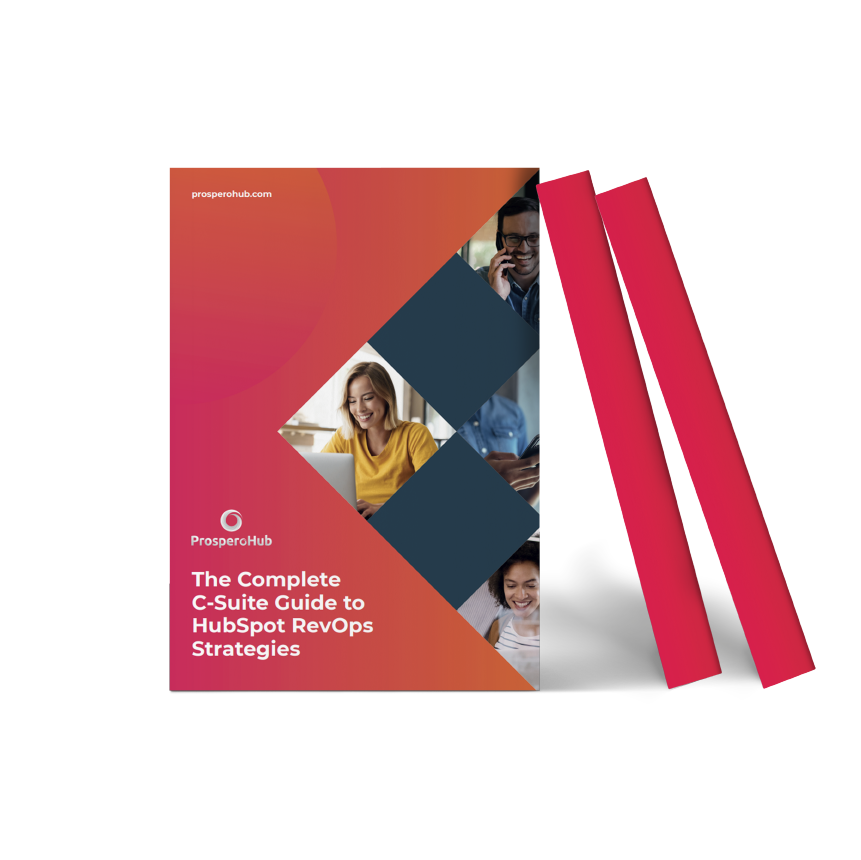Part III in our blog series from Colin Abercrombie ProsperoHub's Director, discusses how to get immediate value from your CRM System. A Chartered Accountant for over 30 years, having had his own practice, Colin was also a Partner in a mid-tier accountancy firm for 5 years.
Check out Part I and Part II if you’ve not done so already.
Your CRM platform has been deployed, the data from all sources has been cleansed and added, you have designed the user interfaces and trained your champions………………what now?
Obtaining High Value, Quickly
To get company-wide “buy-in” quickly from your firm, you will need to show some results. If you have planned and configured things correctly within the system, then you will also have thought through what information you want to surface and designed the dashboards to present this information. You need to ensure that this visibility is there immediately - nothing will destroy credibility quicker than external influencers, who are not involved in the project, forming a view that little or no tangible value is being delivered. Equally, nothing will motivate senior personnel quite like knowing that their activity (or lack of), is entirely visible to management. The surfacing of this information will not only answer the “where are we with this?” questions, but will also provide the forward momentum, via user participation, that is required.
As I mentioned in one of my previous blogs on this subject, stick with cross-selling and new business targets for users just now - in other words, keep things restricted within the Sales & Marketing environment. This is by far the easiest place to start, but it is also the area that will have greatest immediate impact on the firm’s financial performance, in the form of revenue growth.
- Get Marketing driving marketing qualified leads (MQL’s) to your technical professionals;
- Assign the development of these MQL’s, within the CRM environment, to these technical professionals;
- Monitor and control the progress and closure of these MQL’s, into new business, via dashboards.
The entire process of your revenue development plans should be recorded, monitored and driven within your CRM environment. This will ensure that a demonstrable ROI from the CRM project is clear and rapid.
Business Transformation
Once you have all of your senior team active within the CRM platform, via the Sales & Marketing activities outlined above, you can turn the focus of the project onto areas of operational improvement.
There are many areas within a professional services firm where “time spillage” is an issue and represents a genuine obstacle to improved operational efficiency. For decades, many professional firms have absorbed such inefficiencies within the unpaid overtime hours that staff will work - this is an inbuilt disincentive to undertake genuine modernisation and improvement in the business, and will result in loss of staff and succession issue over time (but that’s an entirely different blog!).
Of the areas that a modern practice should be looking at for operational improvement, where can strategic deployment of CRM deliver an impact? Some of the easier places to start include:
(i) Data accuracy and continuity across operational systems - use the CRM as the central “static data” hub, from which all data is synchronised to satellite operational systems;
(ii) Provision of a Single Client View on all operational activity - use the CRM as the interface for all email, letters, memo’s, notes of meetings / calls, etc. Creation of documents through this single client view, and the ability to review all client interactions via one single screen, will bring all of the involved disciplines (tax, general practice, audit, billings etc) together in the servicing of the client in a consistent manner, clearly visible to all professional staff in a clear chronological view of the firms activities;
(iii) Notifications and project messaging platform - the ability to alert colleagues, ‘hand-off’ or delegate activities, etc., without resorting to email, all within the single client view environment;
Workflow management and project status visibility - use the CRM to provide an enhanced and granular single client view by recording and surfacing information of projects in progress;
(iv) Client dashboards for shared project status reporting - provide a client login, or PDF report, to surface status and responsibility information to the client in a user-friendly manner (dashboard or timeline) - for the brave and efficient who are on top of their client’s affairs!
A Few Useful (Random) Tips
- Start with Sales and Marketing and involve the senior technical teams;
- Select a CRM that does not ratchet up cost based on users - this will make a whole firm roll-out expensive;
- Select a CRM that provides clear dashboard and reporting functionality;
- Don’t worry about data continuity and silos within operations - pretty much everything can be synchronised - if you have a plan;
- Don’t try and do too much, too quickly;
- Get CEO level buy-in and participation from the get-go.
Conclusion
Hopefully you have found this short series of blogs useful in your CRM deliberations.
If I was to leave you with one key bit of advice, as you begin your CRM journey, it would be – get expert help from a team who have done this before and understand the particular challenges that a professional firm will face. CRM implementation needn’t be painful, expensive or (eventually) abandoned!
Book a call with one of our ProsperoHub experts to learn more, or request a demo of ProsperoHub.


.png?width=1940&height=1024&name=Part%20of%20Siloy%20logos%20(2).png)



.png?width=125&height=125&name=DataMigration534x534%20(1).png)
-1.png?width=125&height=125&name=Untitled%20design%20(4)-1.png)
